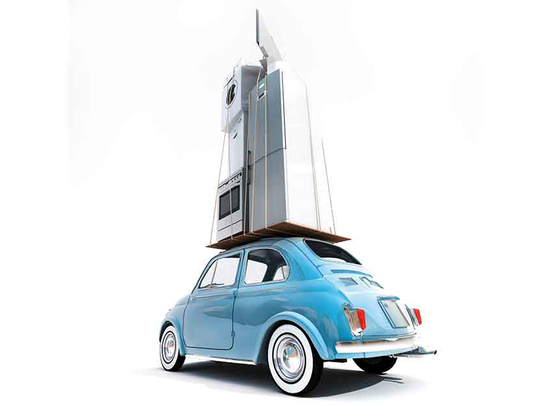
The modern home is a menagerie of electronics beeping, blinking and humming away. In 2013, the Consumer Electronics Association estimated the average American household was loaded with 24 gadgets — surely a number many tech-savvy and gadget-hungry homes in the UAE surpassed long ago. But a den full of gadgets can induce a major headache when the time comes to move house — your electronics typically need extra care and attention during the packing and transporting stages.
With these tips, you won’t have to be the person who moves into a new home and unpacks those expensive gadgets, only to find them cracked, scratched, dented or busted.
All boxed up
Ideally, you should be putting your gadgets back in the boxes they originally came in — these are specifically designed to keep the electronics safe during the long haul. But, in reality, most consumers throw away the boxes and have to use generic packaging while relocating.
So for optimal safety, measure your gadgets and pair them to boxes that are slightly bigger — ensuring there is enough room for extra padding, but not enough for the gadget to slosh around inside the box. Also use zip-ties for the cords and cables. Label each power adapter carefully, so you know which one plugs where — using the wrong adapter can blow up a gadget and turn it into a fancy paperweight.
Finally, do remember to number each box, labelling each with a note on what is inside and which room it will end up in.
TVs
If you have multiple devices connected to the TV, take a picture of the back panel before unplugging the cables — this will make it easier to reassemble your set-up exactly the way it was at your previous home. With TVs, the key concern is the big screen, especially if you have a plasma TV where the glass display is filled with gas. So as the first layer of protection, wrap up the TV with newsprint, and then use bubble wrap as the second layer. If you have a mattress handy, that too can go around the TV. Use a box that is rigid and thick. Finally, transport the TV in an upright position, instead of laying it down flat — this will eliminate the risk of other boxes piling on top and putting pressure on the screen.
White goods
The fridge is usually the largest member of your appliance arsenal, and needs additional steps before you wrap it up nicely. Empty it out, defrost and drain it a day before moving. Then remove the shelves and bins, clean them and either securely tape them inside the fridge or, even better, transport them separately. Ensure the power cord is securely taped to the back of the fridge, and the door locked.
Similarly, the washing machine needs to be drained and dried out. Stuff some padding or towels around the tub, to stop it from rotating.
Home theatre
The typical AV amplifier has a laundry list of connectors at the back, and these can easily bend or break under pressure. Hence, it is vital to maintain a cosy gap between the connectors and the side of the box, ideally by using a mix of rigid and foam padding.
Speakers pose an even bigger challenge, with banana plug connectors that stick out, a thin grille up front that can easily rip apart, and fragile speaker cones that can be deformed or tear. Here, you are better off going overboard with the bubble wrap and the mattress treatment. Also tape a small and rigid plastic cup over the plugs. Moreover, ensure you pack the speakers in the most rigid box you can lay your hands on.
If you have an old-school computer at home, it includes components with moving parts, such as hard disks, cooling fans and DVD drives. The goal here is to minimise vibrations and shocks to these parts, by using ample foam padding and air pillows, both around the computer as well as above and below.
However, before that, snap a picture of the connections at the back. Then eject any disk from the drives, remove the cables and label them. As an extra measure, back up your hard disk to an external drive or to a cloud service. Additionally, pack accessories such as modems, speakers, keyboard and mouse in a separate box.
Small appliances
Small appliances tend to have multiple loose parts. An espresso machine, for example, has lids, water tank, drift tray, coffee container and other detachable or moving components to be secured — use a strong but residue-free tape here. These machines need to be dried out before packing — so plan ahead. Avoid using foam pellets or shredded packing materials that can get into an appliance. If you don’t notice these, you could end up with malfunctioning units. Use crushed paper instead — lots of it. If you are packing multiple appliances in one box, ensure you separate them with adequate padding — towels will wok wonders here.
And yes, label the box with the coffee machine as #1 — so that you unpack it first, and kick-start life at the new place with a freshly brewed cup of coffee.












